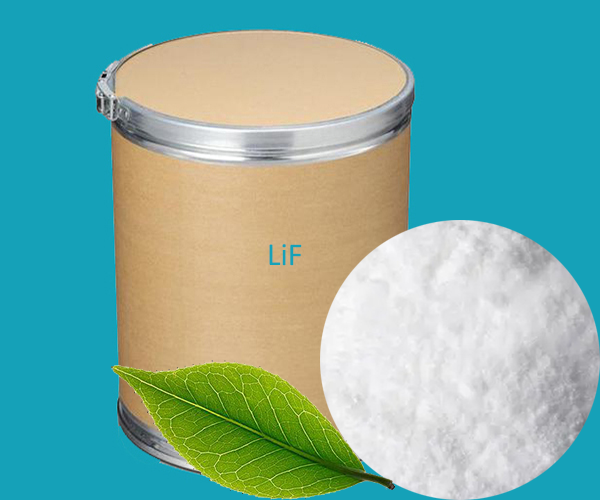Lithium fluoride (LiF) is an inorganic compound that usually exists as a white solid powder. It is an ionic compound composed of lithium ions (Li⁺) and fluoride ions (F⁻). Lithium fluoride has a high melting point (about 845 °C) and good chemical stability, and is not easy to react with water, but it will react with concentrated acid to form the corresponding lithium salt and hydrogen fluoride.
Uses of Lithium Fluoride
1. Optical applications: Lithium fluoride is used as a component of optical materials due to its high transparency and good optical properties, especially in the manufacture of ultraviolet and infrared optical components, such as lenses, prisms, and windows.
2. Nuclear industry: In the nuclear industry, lithium fluoride can be used as a neutron shielding material and as a coolant for nuclear reactors. It is also used as a feedstock for the nuclear fusion reactions of lithium-6 and fluorine-19 in breeder reactors.
3. Ceramics and electronics industry: Lithium fluoride is used to make electronic ceramics such as capacitors and thermistors. It is also used as a high-temperature lubricant and as a melting additive for aluminum.
4. Thermocouples: Lithium fluoride is mixed with materials such as zirconia to make high-temperature thermocouples, which are used to measure temperature in high-temperature environments.
5. Mining: In the beneficiation process, lithium fluoride is used as a flotation agent to separate and enrich certain metal ores, such as copper, lead, and zinc ores.
6. Research and laboratory uses: Due to the transparency of lithium fluoride to neutrons and thermal radiation, it is used in physical experiments and nuclear research fields.
7. Pharmaceutical: Although not as widely used as lithium carbonate, lithium fluoride is also used in specific drug formulations and medical applications.
8. Environmental monitoring: Lithium fluoride is used in environmental monitoring as a reagent for the detection of fluoride in air pollution control systems.
9. High-energy batteries: Lithium fluoride has also been studied as a potential electrolyte material for high-energy batteries, such as lithium-fluoride batteries.
 English
English Español
Español Português
Português Français
Français Deutsch
Deutsch Русский
Русский 中文
中文 日本語
日本語
